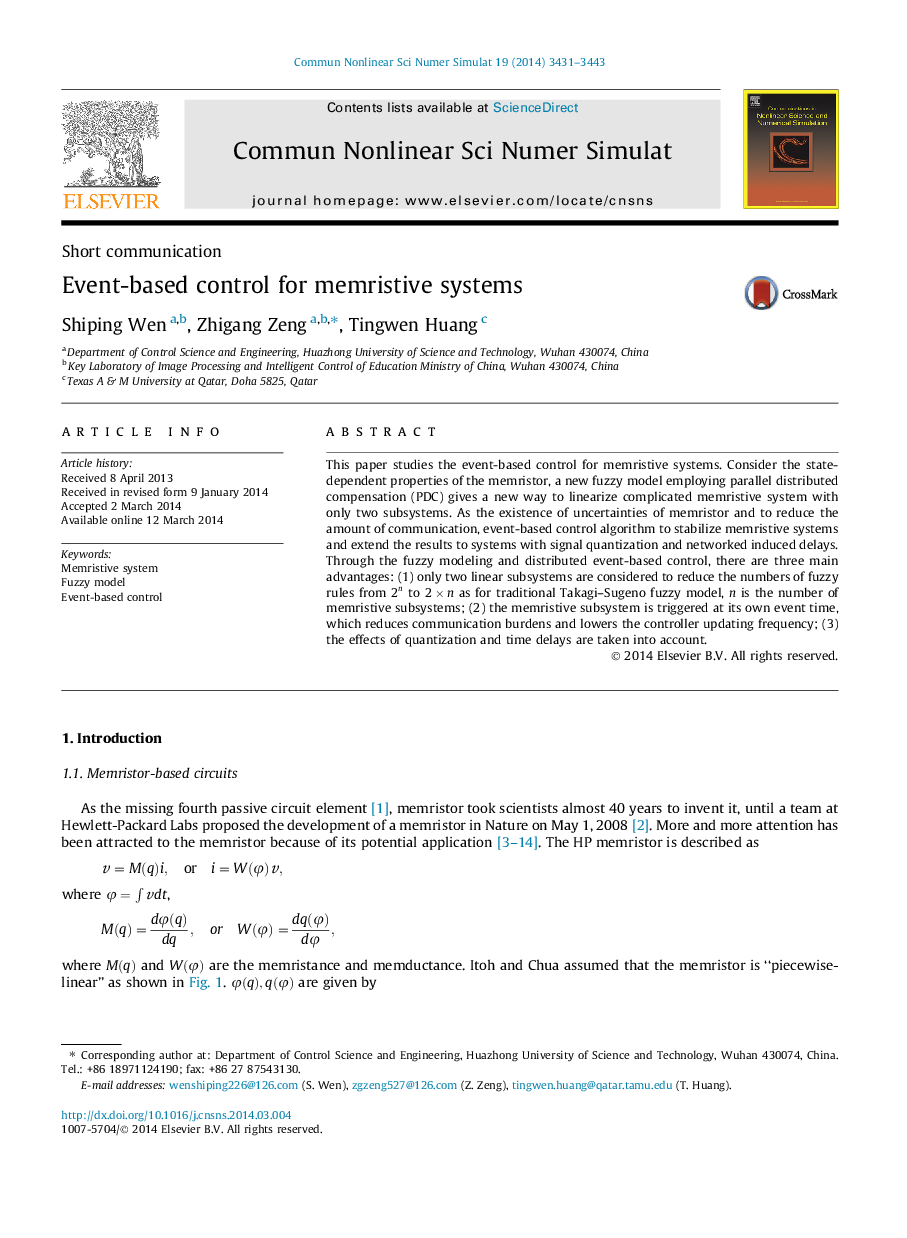| Article ID | Journal | Published Year | Pages | File Type |
|---|---|---|---|---|
| 758865 | Communications in Nonlinear Science and Numerical Simulation | 2014 | 13 Pages |
•Only two linear subsystems are considered to reduce the numbers of fuzzy rules.•The memristive subsystem is triggered at its own event time.•The effects of quantization and time delays are taken into account.
This paper studies the event-based control for memristive systems. Consider the state-dependent properties of the memristor, a new fuzzy model employing parallel distributed compensation (PDC) gives a new way to linearize complicated memristive system with only two subsystems. As the existence of uncertainties of memristor and to reduce the amount of communication, event-based control algorithm to stabilize memristive systems and extend the results to systems with signal quantization and networked induced delays. Through the fuzzy modeling and distributed event-based control, there are three main advantages: (1) only two linear subsystems are considered to reduce the numbers of fuzzy rules from 2n2n to 2×n2×n as for traditional Takagi–Sugeno fuzzy model, n is the number of memristive subsystems; (2) the memristive subsystem is triggered at its own event time, which reduces communication burdens and lowers the controller updating frequency; (3) the effects of quantization and time delays are taken into account.
